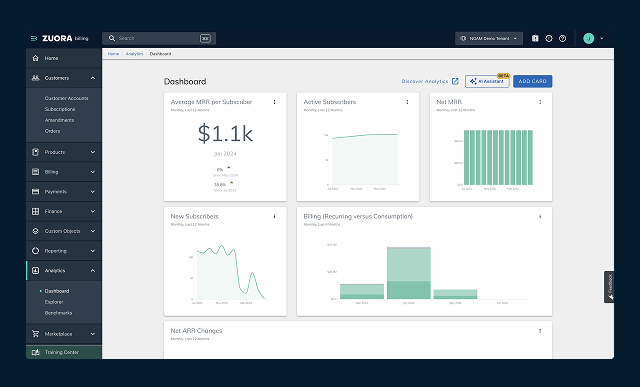From Graham Kimberley
When combined with AI and other advanced technologies, today’s ERP platforms can help you grow margins for partners of accountancy firms.
As the partner responsible for IT in an accountancy firm, some of the pressure to improve partner margins may fall on you. This pressure pervades all types of accountancy businesses, from financial accounting practices and audit accountants to managerial accounting firms.
To help you make the business case for IT investment, here are three innovative ways that enterprise resource planning (ERP) platforms, artificial intelligence (AI) and other advanced technologies can help you increase partner margins.
1. Unifying processes
With most accountancy firms spread over multiple locations, the key to improving operational efficiency and people productivity is unifying and centralizing processes. This ‘single business’ model also helps increase inter-departmental collaboration, decision-making and agility.
Today’s flexible, cloud-based ERP platforms are built around a loosely coupled, flexible microservices-based architecture, offering interoperability, extensibility and configurability.
They allow your organization to benefits from advanced, AI-powered forecasting capabilities within integrated corporate performance management tools. HR software tools are easily integrated with your organization-wide ERP to reduce costs and help you better manage your workforce, while also improving people experience.
Company-wide data is stored in a single version of the truth, and accessed through dashboards, to improve decision-making and agility at all levels.
Today’s ERPs are designed to help accountancy firms adapt easily to rapid change by deploying tools that can be reconfigured without expensive and slow tech intervention. No-code/low-code configurability allows users with little IT expertise to make changes at a local level.
Accountancy-specific ERPs are available straight off-the-shelf with standardization of implementation to minimize the cost of ongoing IT maintenance and laborious admin work, as well as reduce time-to-value.
2. Automate manual tasks
Advanced technologies like AI can automate laborious, manual admin processes — those repetitive tasks which add no value to your organization. A natural language digital assistant (DA), like Wanda, for example, helps fee earners, managers and back-office staff reduce the admin load in areas such as compiling reports, procuring items, discovering project status or triggering workflows.
Using DAs like Wanda, fee-earners record time and expenses (T&E) using a conversational interface on any mobile device. Using pattern recognition, predictive analytics and sentiment analysis, Wanda learns preferences and context, even the way users talk. It can also suggest actions or provide contextually relevant insight.
Fee earners can also simply take a picture of a receipt to automatically record the hours, purpose, location and even client name (geolocation tells the system which client’s site they are visiting). All they have to do is manage by exception, which can be as easy as simply saying ‘yes.’
For consultants, Wanda’s intuitive, visual tools aid top-down planning, including status monitoring and mixed planning approaches, plus gap analysis and strategic objectives. For decision-makers, like finance managers and budget holders, Wanda can keep all their data and indicators at their fingertips.
By transforming work for all your staff through automation and AI, you reduce people costs and raise people productivity; optimize billable utilization and minimize your use of subcontractors, therefore increasing revenue and partner margins.
3. Simplify compliance reporting
The admin involved in satisfying external legal requirements can slow you down, whether it’s making tax digital (MTD) for you and your clients, due diligence checks for onboarding a new entity, or changes to generally accepted accounting principles (GAAP) if you’re a financial accounting practice. And non-compliance may lead to fines, which could be reduced or avoided entirely with better monitoring.
The best of today’s ERPs optimize governance and simplify compliance by providing current data streams and more accurate data input and reporting.
They come with agile, reliable and accountancy-specific operational reporting off-the-shelf. This gives you information consistency, superior change support and efficient information distribution, combined with strong governance.
Boosting partner margins with technology
By harnessing a modern, flexible ERP which features AI and enterprise tools like DAs, you can unify organization-wide processes, modernize admin-heavy processes and make compliance easier, ultimately reducing costs and improving margins for partners.




